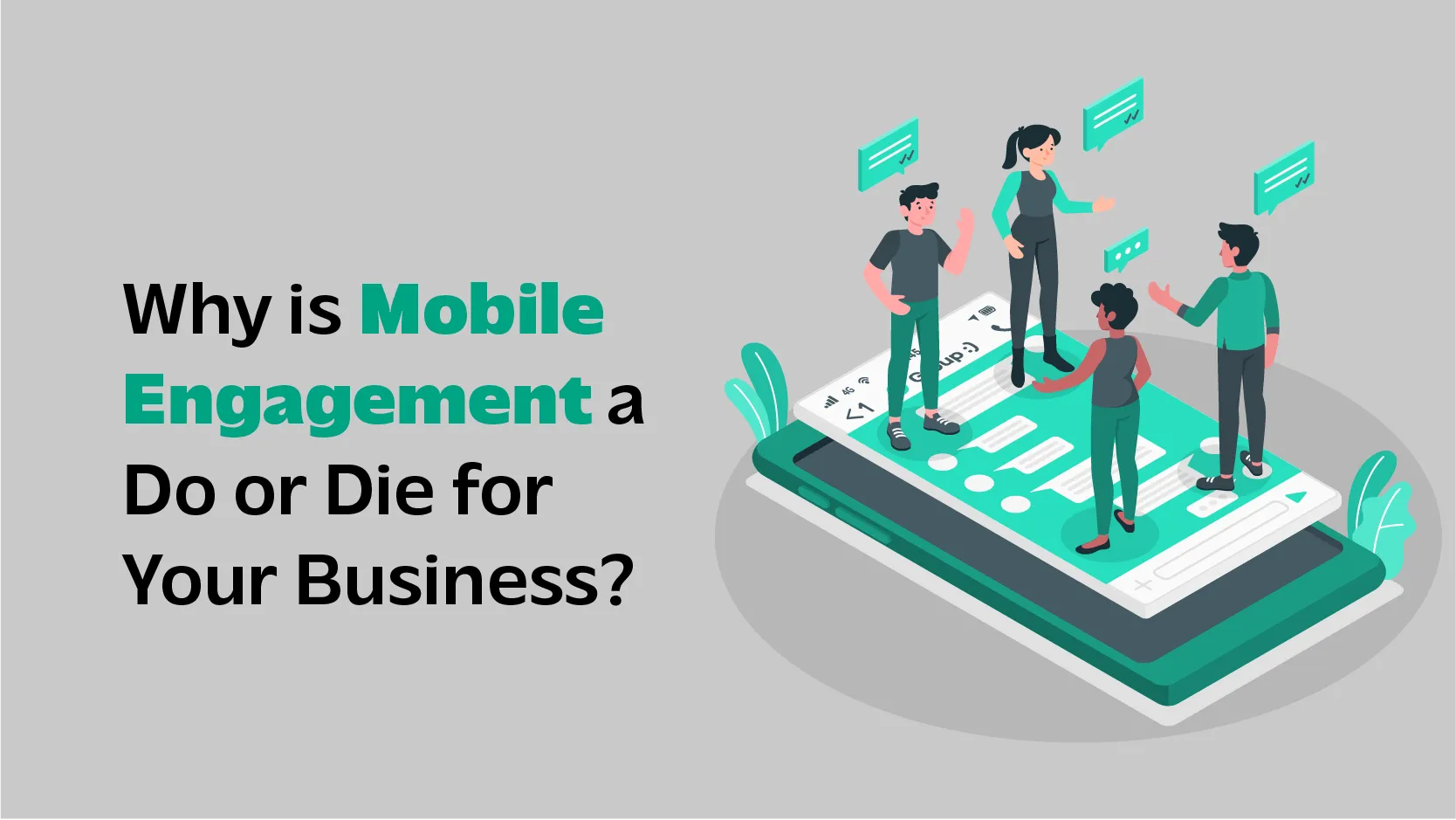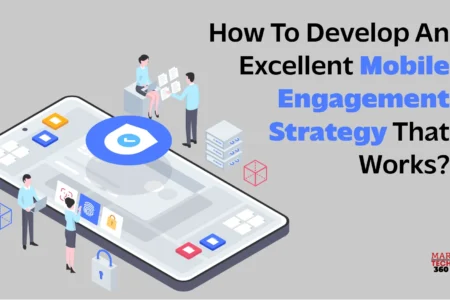More traffic to the website means more clicks, more users, and more revenue flooding in for the business. The majority of the users utilize their phones to access all the sites on the internet.
According to a report, mobile generates up to almost 58.21% of global internet traffic. Business decision-makers cannot miss out on such an immense amount of users accessing the internet through their phones.
In order to capture the users on mobile and lure them to the website, businesses need to embrace a robust mobile engagement strategy. In this blog, we will have an overview of what mobile engagement strategies are, why businesses need one, and how to develop the best one.
What is Mobile Engagement?

Where is the ideal place to attract your customer’s attention? Mobile. Approximately 4.32 billion people use the mobile Internet actively today. You won’t want to skip out on that kind of traffic.
This is why, when done correctly, mobile app engagement strategy improves the reputation of your brand and develops successful, lasting connections.
Why is Mobile Engagement a Do or Die for Your Business?

Engagement on mobile is more important than ever. Americans now account for over 85% of smartphone owners, up from 35% in 2011, and smartphone owners use their devices to decide which companies they will purchase from.
On a global scale, approximately 7.33 billion people will use mobile phones in 2023, including both smart and feature phones, accounting for 91.21% of the world’s population.
Currently, 79% of smartphone users claim they have made an online purchase using a mobile device in the past six months, and 40% say they would choose a competitor if they had a terrible mobile experience with a company.
This calls for a user-friendly, practical, and intuitive mobile website or app.
Don’t trust the statistics? Well, according to an article published by Access, interactions and engagement are directly correlated ; the more regular and significant the interactions, the more engaged the user is.
More than half of e-commerce transactions for many businesses are now completed on mobile devices, making it the preferred channel for their consumer base. Consequently, the goal is to increase the frequency with which individuals interact with your business while using their phones.
Also Read: Conversational Marketing Revealed: Definitions, Benefits, and Best Practices
How to Increase Mobile App Engagement for a Stellar Revenue Growth?
There are multiple mobile app engagement strategies out there that are designed to create winning success.
Here are some suggestions to get your mobile app engagement strategy plan off the ground.
1. Make Your Site Mobile-Friendly
Naturally, your site should be mobile-friendly if you’re trying to draw in mobile users. There are many things you can do to enhance your site’s mobile usability, but I’ll focus on your three main concerns right now.
Reduce Pop-ups first, unless absolutely required, stay away from pop-up windows.
Keep your pop-ups as unobtrusive as you can (i.e., just covering a small portion of the screen) when you do need to include them. They should have a distinct “dismiss” button and be simple to close.
Note: These guidelines do not apply to necessary pop-ups, like cookie notices or age verification forms.
2. Increase Page Speed
70% of users claim that the speed at which a website loads on a mobile device influences their willingness to make a purchase from a brand.
Pay great attention to your website design when considering how to increase loading speed, especially:
- Activating caching
● Installing the AMP (accelerated mobile pages) code
● Reducing the use of Cascading Style Sheets and JavaScript
● Using lengthy scrolls
● GZIP compression on CSS and HTML files enabled
● Ensuring that all material on your website loads above the fold first
3. Add deep links and native product suggestions using push notifications
Do you know that users of an app who have enabled push notifications log into 53% more monthly sessions than users who have chosen to disable them?
The two major mobile operating systems, iOS and Android, each have a 67.5% opt-in percentage for push notifications. Push notifications can be quite tough to ignore when they are specifically customized to a person’s prior engagement history.
An injection of dopamine is the perfect way to pique a consumer’s interest in addition to the feel-good endorphins that already activate in our brains. Understanding the underlying motivations of your customers might help you create push notifications that are impossible to ignore.
Include links and product recommendations related to previous purchases or items viewed, added to cart, or made… and observe how engagement soars.
4. Address your customer like your best friend
Personalisation goes all the way. Imagine getting a notification from your favorite app with a personalized note. Who wouldn’t check it, right?
In-app messages are a complementing choice to promote a strong UX and CX — an opportunity to let consumers know. Uses for in-app messages include:
- Notify a user when a given brand or category’s price drops.
● Promote cross-selling by inviting customers to look at related products.
● Use chatbots to have direct conversations with users.
5. Graphics all the way
Gamification has advantages that go beyond anecdotal evidence. According to data from M2, website gamification increases engagement benchmarks by between 100% and 150%.
Ever visited KFC, Starbucks, Headspace website and saw some cool gamified stuff popping up all over your computer screen?
You want to provide your mobile visitors with exactly that kind of experience. If you want to encourage customers to return to your website and make purchases, think about offering a discount after a particular amount of money is spent or a reward after a certain number of logins.
Gamification has advantages that go beyond anecdotal evidence. According to data from M2, website gamification increases engagement benchmarks by between 100% and 150%.
Final Verdict on Mobile Engagement
The surge in the adoption of mobile phones and mobile devices in the past decade has been substantial. It portrays the immense leap that technology has taken over the years. There has been a huge behavioral and expectational change that mobile phones have enforced on consumers and businesses. An effective mobile engagement strategy is crucial for any business to avoid considering the current scenario. Business decision-makers need to consider all the crucial factors before designing and implementing mobile engagement strategies.
Test everything out is my final piece of advice to you. Before implementing any significant changes live, iron out all the wrinkles. To learn more about how your changes are received and to improve them, you can utilize any free mobile-friendly tool.
Remember , there’s no perfect step, it all depends on how well you implement it. Implement, execute, revise, repeat.

